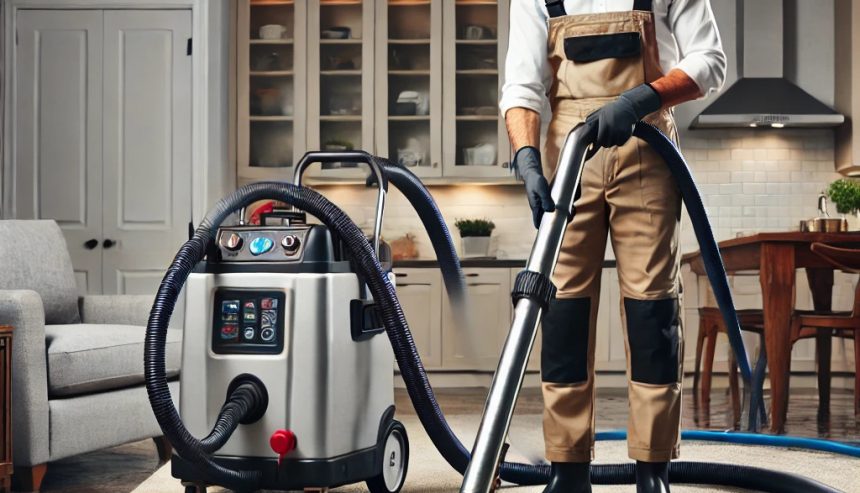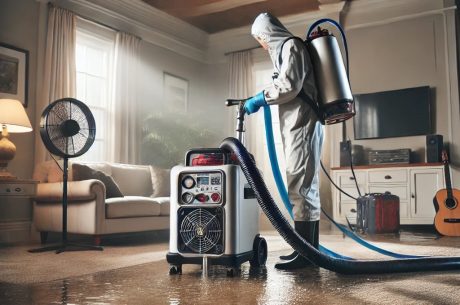Water damage is one of the most frequent problems that can happen to any house owner and can be caused by factors such as pipe leakage, rainwater, or sewage overflow. It is a very tedious and complicated process to clean up after water damage, and it is important to know what measures to take in order to make a positive impact. The water damage cleanup process is not only a matter of fixing the water problem but also preventing future occurrences of the same. Below are ten important guidelines that will help you in the process of water damage restoration and protection of your property.
10 Essential Tips for Water Damage Cleanup Process
Water damage restoration is a process that needs to be done in the right manner and with a lot of precision. Below are the ten tips that will help you in the process of water damage cleanup:
1. Assess the Situation Immediately
First of all, try to estimate the extent of the harm done. If possible, locate the source of water and stop it from coming out. If the water supply pipe has burst, then close the main water supply valve. For heavy rain-induced floods, one should look for the source of the water leakage on the roof and the exterior part of the house. Check all the areas that are affected, including the floor, walls, and ceiling.
Check for watermarks, sagging floors or walls, and moldy insulation to find out how much damage has been done. It will enable you to identify the procedures and tools needed for the cleanup to make the right decisions at the outset.
2. Turn Off the Electricity
Electrical and water are two things that should not mix as they are very dangerous. There are certain safety measures that should be put in place before one can begin cleaning, and these include ensuring that the power supply is cut off in the affected areas to avoid electrocution. If water comes into contact with electrical outlets, switches, or appliances, then it is necessary to switch off the electricity. For safety, if you are not sure how to cut off the power, it is recommended that you consult a licensed electrician. This will help maintain safety when it comes to electricity; hence, the environment will be safe for cleaning and repairing.
3. Wear Protective Gear
It is important to wear protective gear when handling water damage, particularly if the water is not clean. To protect yourself from contamination and bacteria, make sure to wear waterproof gloves, rubber boots, and a mask. Water that is contaminated, for instance, water from sewage backup, is dangerous to one’s health, and thus protective gear is important. Also, wear safety goggles to avoid the eyes from being damaged by debris and the cleaning solutions. Using the right equipment and gear also reduces the chances of getting sick and also protects you when dealing with risky substances.
4. Remove Standing Water Promptly
Water accumulation should be dried up as soon as possible in order to minimize the extent of the damage and to avoid mold growth. To remove water from floors and other surfaces, one can use a wet/dry vacuum or a water pump. For small areas, wiping with towels may be enough, while for large areas, it may be necessary to rent commercial-grade extraction equipment. Make sure that the contaminated water is properly disposed of as per the rules and regulations of the area. This reduces the effects of water on structures and furniture and also shortens the time taken in the restoration process.
5. Ventilate and Dry Out Affected Areas
After that, the water has to be drained out, and the remaining water has to be wiped off from the affected areas. Mold cannot grow in an area that has proper ventilation; hence, there is a need to ensure that the affected area is well-ventilated. Ensure that you use fans and dehumidifiers to help circulate air and eliminate moisture in the surroundings. If it is possible, open the windows to let fresh air in the room. In case of extensive water damage, it is recommended that one get industrial-grade drying equipment either by renting or buying it. It is important that all the affected areas are well-dried to avoid the growth of mildew and other damages.
6. Inspect and Address Structural Damage
Water can be a major cause of weakening of the structure of your property. Check walls, ceilings, floors, and foundations for any cracks, distortions, or other signs of damage, for instance, warping or staining. Also, try to find out if there is any water that has penetrated through the walls or floor, as this may cause long-term problems. Sometimes, it may be required to take out and bring in new materials like the wall, insulation or floor because of their poor condition.
7. Clean and Disinfect Surfaces
Water that has been contaminated may still contain bacteria and other pathogens, which means that cleaning and disinfection have to be done thoroughly. For hard surfaces, it is recommended to use a solution of water and bleach or any other commercial disinfectant cleaner on the floor, countertops, and cabinets. For soft items such as carpets, rugs, and upholstery, it may be necessary to engage the services of professional cleaners to get rid of the contaminants. It is also important to make sure that all the surfaces are dried after cleaning in order to avoid the growth of molds and other contamination.
8. Check for Mold Growth
Mold can start to grow in water-damaged areas within 24-48 hours. To avoid mold problems, it is necessary to look for signs of mold growth on your property. Check for areas that are not easily accessible, like behind walls, under the floors, and in the insulation. Mold is unhealthy for people and can lead to more damage if not removed as soon as possible.
Mold should be dealt with as soon as you notice it in your home or workplace. For severe mold growth, it is recommended that one considers consulting a professional mold removal service provider who will be in a position to handle the mold removal process in the right manner.
9. Document Everything for Insurance Claims
It is vital to keep records of the events that occur to ensure that one can get compensation from an insurance company. Photograph or record each damaged part of the house and every affected item before starting the cleaning process. Make sure to note down any repair or replacement that has been made and also maintain all the records of the expenses incurred. This documentation will be important for your insurance claim and will assist in guaranteeing that you get the right amount of compensation for the loss and costs of cleanup.
10. Implement Preventative Measures
After the cleanup process is over, make sure to do all that is possible to ensure that there is no more water damage. Check on your property often for any signs of problems like water stains, blocked gutters, or burst pipes, among others. Make sure that your home’s drainage system is working properly and that the sump pump is in good condition. You may also want to think about putting in water alarms or leak detection systems in order to catch any issues before they become big. Flood insurance is another way of protecting oneself from financial loss in case of floods, especially if one is living in an area prone to floods.
Conclusion
Water damage cleanup measures can, therefore, be divided into three categories, namely, the initial response, the cleaning-up process, and the prevention measures. Here are ten tips that will help you to clean up the mess and minimize further damage to your property.
Starting from the identification of the affected areas and checking for safety to the elimination of water, drying of the affected areas, and dealing with structural issues, all the phases are equally important in the water damage restoration process. If you have a lot of damage or if you feel that you need it, you can always turn to a professional for more help. It is, therefore, possible to bring your property back to its original state and prevent future water damage.




 PuroClean of Rochester Hills
PuroClean of Rochester Hills